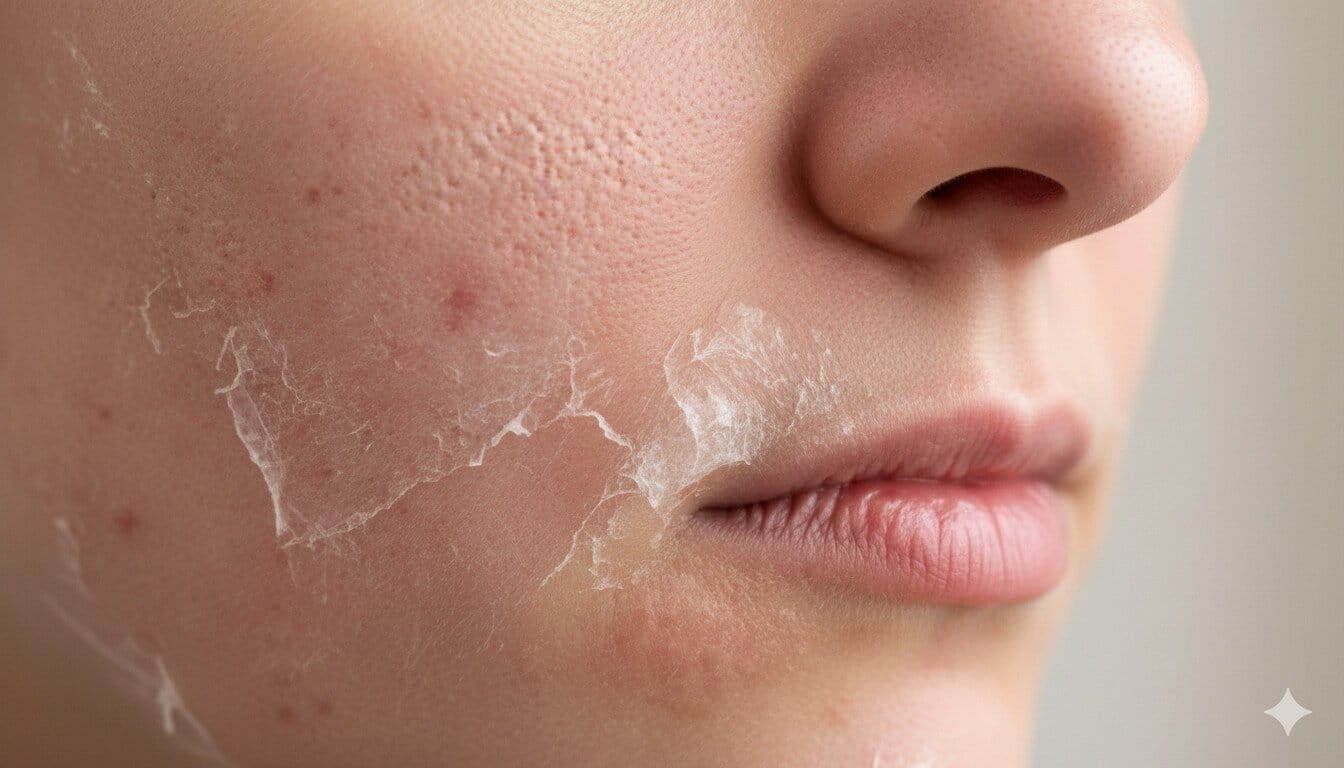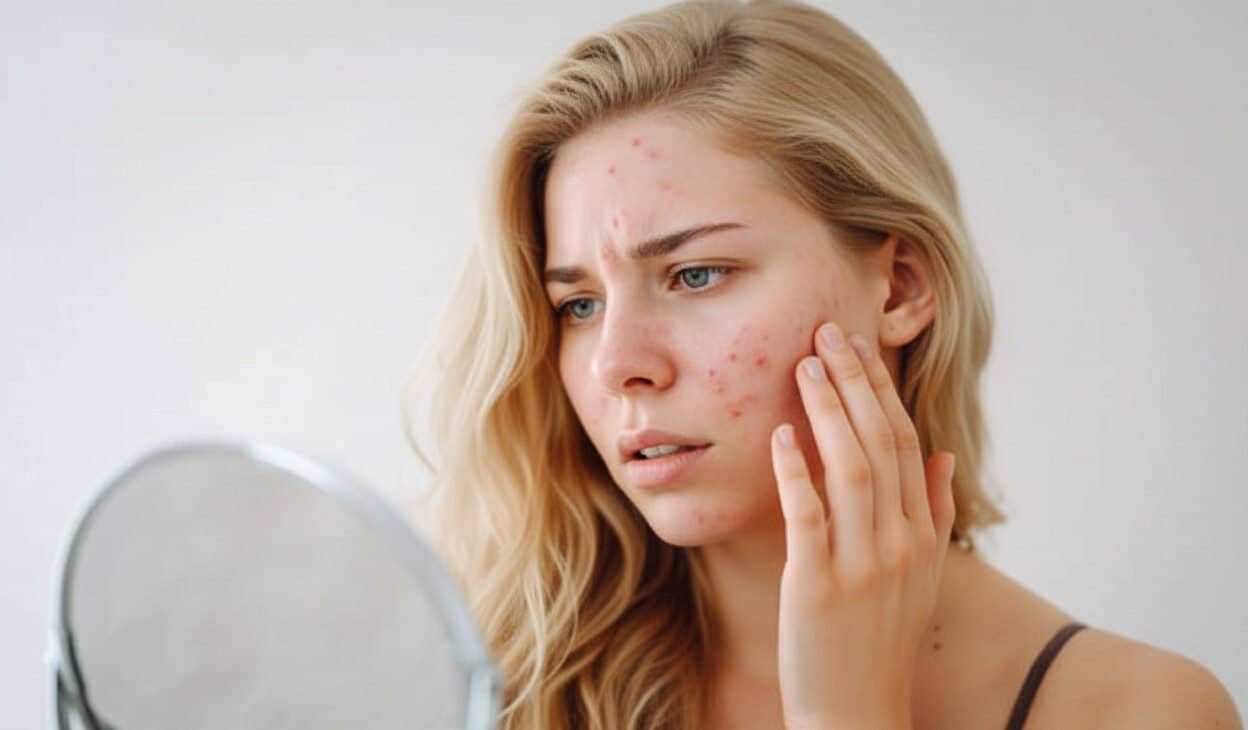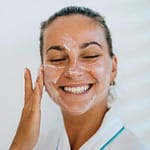Top 7 Ways You’re Washing Your Face All Wrong
Want clear, glowing skin? Washing your face seems simple, but many people make mistakes that lead to acne, dryness, or irritation. These face-washing errors can clog pores, trigger breakouts, or damage your skin’s natural barrier. In this guide, we’ll uncover the top seven ways you’re washing your face wrong, explain why these mistakes hurt your skin, and share expert tips to fix them. You’ll also find the best cleansers, natural remedies, and answers to common questions to help you achieve healthy, radiant skin. Perfect for beginners or anyone struggling with skin issues, this article is your go-to for a better face-washing routine. Let’s dive in and transform your skincare game!
Tips
1. Using Water That’s Too Hot or Too Cold
Hot water feels relaxing, but it strips your skin’s natural oils, leaving it dry, flaky, or tight. Cold water, on the other hand, doesn’t clean effectively, leaving dirt and oil behind. Both can upset your skin’s balance, causing redness or breakouts. Fix it: Use lukewarm water (around 98–100°F) to gently cleanse while preserving your skin’s moisture. This temperature opens pores just enough to remove impurities without harm.
2. Scrubbing Your Face Too Hard
Rubbing your face like you’re cleaning a dirty pot can irritate your skin, cause redness, or even create tiny tears that let bacteria in. Over-scrubbing also triggers oil production, leading to more pimples. Fix it: Use your fingertips or a soft washcloth to massage cleanser in gentle, circular motions for 30–60 seconds. Treat your face like delicate glass to keep it calm and clear.
3. Choosing the Wrong Cleanser for Your Skin Type
Using a cleanser that doesn’t match your skin type—oily, dry, combination, or sensitive—can worsen issues. For example, a harsh cleanser for oily skin can dry out sensitive skin, while a rich, creamy one can clog pores on oily skin. Fix it: Identify your skin type and pick a cleanser designed for it. Oily skin loves gel-based cleansers, dry skin needs hydrating ones, and sensitive skin benefits from fragrance-free options.
4. Overwashing Your Face
Washing your face more than twice daily can strip natural oils, making your skin dry, flaky, or overly oily as it overcompensates. This can lead to acne or irritation. Fix it: Stick to washing twice a day—morning and night. If you sweat from exercise, cleanse gently afterward, but avoid extra washes to maintain your skin’s balance.
5. Not Rinsing Cleanser Off Completely
Leaving cleanser residue on your skin can clog pores, cause breakouts, or lead to itchiness. Soap or chemicals left behind irritate your skin and undo your cleansing efforts. Fix it: Rinse thoroughly with lukewarm water, splashing 5–10 times or using a clean washcloth. Check areas like your hairline, jawline, and nose where cleanser tends to hide.
6. Skipping Moisturizer After Washing
Think moisturizer is just for dry skin? Wrong! Washing removes some natural oils, so all skin types need hydration to stay balanced. Skipping moisturizer can lead to tightness, flaking, or extra oil production as your skin tries to compensate. Fix it: Apply a lightweight, non-comedogenic moisturizer right after washing to lock in hydration and protect your skin barrier.
7. Drying with a Dirty or Rough Towel
Using a dirty towel or rough cloth to dry your face can transfer bacteria, oil, or dead skin back onto your clean face, causing pimples or irritation. Rubbing too hard also damages your skin. Fix it: Use a clean, soft towel every time and gently pat your face dry. Consider microfiber towels for extra gentleness and better hygiene.
Why is it important?
Proper face washing is the foundation of healthy skin, but common mistakes can sabotage your efforts. Your skin’s surface has tiny pores that can trap oil, dirt, dead skin, or bacteria, leading to acne, blackheads, or redness. The natural oils (sebum) your skin produces act as a protective barrier, keeping it soft and hydrated. However, errors like using hot water, harsh cleansers, or dirty towels can disrupt this balance, causing dryness, oiliness, or breakouts. Each skin type—oily, dry, combination, or sensitive—requires specific care. For example, oily skin needs oil-controlling products, while dry skin craves hydration. Sensitive skin demands gentle, fragrance-free formulas, and combination skin needs a mix of both.
These mistakes are easy to make because face washing feels like second nature. But small tweaks can transform your skin! Avoiding harsh scrubbing, choosing the right cleanser, and using clean towels can prevent irritation and keep pores clear. Consistency is key—stick to a proper routine, and you’ll notice fewer breakouts, less redness, and a smoother complexion. Pairing your routine with the right products and natural remedies can amplify results, giving you that glowing, healthy look you’re after. Whether you’re battling acne or just want better skin, fixing these face-washing mistakes is a game-changer.
How to Use
Follow this step-by-step guide to wash your face correctly and avoid common mistakes:
- Step 1: Prep with Lukewarm Water
Wet your face with lukewarm water (not hot or cold) to prepare your skin. This temperature cleans effectively while preserving natural oils. Spend 10–15 seconds splashing water evenly across your face. - Step 2: Apply the Right Cleanser
Squeeze a dime-sized amount of cleanser into your hands. Rub them together to create a light foam, then gently massage it onto your face in circular motions for 30–60 seconds. Focus on the T-zone (forehead, nose, chin), where oil and dirt build up most. Avoid harsh scrubbing to prevent irritation. - Step 3: Rinse Thoroughly
Use lukewarm water to rinse off all cleanser. Splash your face 5–10 times or use a clean, damp washcloth to ensure no residue remains. Check your hairline, jawline, and sides of your nose for leftover cleanser. - Step 4: Pat Dry Gently
Grab a clean, soft towel (microfiber is best) and pat your face dry—no rubbing! This prevents irritation and keeps your skin smooth. Use a fresh towel each time to avoid bacteria. - Step 5: Moisturize Immediately
Within 60 seconds of drying, apply a non-comedogenic moisturizer suited to your skin type. Use gel-based for oily skin, cream-based for dry skin, or a lightweight lotion for combination skin. Apply a thin layer to lock in hydration. - Extra Tips for Success:
- Wash twice daily: morning to refresh and night to remove dirt, oil, or makeup.
- For makeup or sunscreen, double-cleanse at night: use a cleansing oil or micellar water first, then your regular cleanser.
- After sweating (like from sports or heat), cleanse gently to remove sweat and prevent clogged pores.
- Change pillowcases weekly and avoid touching your face to minimize oil and bacteria transfer.
Follow this routine consistently for 2–4 weeks to see clearer, healthier skin. Be patient—great results take time!
Brand Products to Use
Using the right cleansers and moisturizers is crucial for a proper face-washing routine. Here are top-rated products tailored to different skin types, all widely available and dermatologist-recommended:
- CeraVe Hydrating Facial Cleanser ($15–20): Ideal for dry or sensitive skin, this non-foaming cleanser contains ceramides and hyaluronic acid to clean gently while hydrating. Use morning and night for soft, non-irritated skin.
- Neutrogena Ultra Gentle Daily Cleanser ($10–15): Perfect for all skin types, especially sensitive or combination. Its fragrance-free formula cleans without stripping moisture, making it a great starter cleanser.
- La Roche-Posay Effaclar Purifying Foaming Gel ($15–20): Designed for oily or acne-prone skin, this gel cleanser removes excess oil without over-drying. It’s gentle enough for daily use and helps reduce breakouts.
- Cetaphil Gentle Skin Cleanser ($10–15): A cult favorite for all skin types, this non-foaming cleanser is ultra-gentle and won’t irritate even sensitive skin. Use it twice daily for clean, balanced skin.
- CeraVe AM/PM Moisturizer Bundle ($20–30): After cleansing, use CeraVe’s AM lotion with SPF 30 for daytime protection and PM lotion for nighttime hydration. Both are non-comedogenic and suit all skin types.
- The Ordinary Niacinamide 10% + Zinc 1% Serum ($6–10): Apply this lightweight serum after cleansing (before moisturizer) to control oil, reduce redness, and minimize pores. It’s budget-friendly and great for acne-prone skin.
How to Choose: Pick a cleanser and moisturizer based on your skin type. Test new products on a small patch of skin to avoid reactions. Follow package instructions, and don’t overuse—more isn’t better! If irritation occurs, stop use and consult a dermatologist.
Natural Remedies
Prefer a natural approach? These remedies can enhance your face-washing routine or soothe your skin without synthetic ingredients:
- Oatmeal Cleanser: Grind plain oats into a fine powder and mix with water to form a paste. Massage gently onto damp skin for 30 seconds, then rinse with lukewarm water. Oatmeal calms irritation and cleanses mildly, ideal for sensitive or red skin. Use 2–3 times a week.
- Raw Honey Wash: Raw honey is naturally antibacterial and great for acne-prone skin. Apply a teaspoon to damp skin, massage for 1 minute, and rinse thoroughly with lukewarm water. Use 2–3 times weekly to reduce breakouts and soothe skin.
- Green Tea Rinse: Brew green tea, let it cool, and use it as a final rinse after cleansing. Its antioxidants reduce redness and fight bacteria. Pour it over your face or apply with a clean cloth, then pat dry. Use daily for calming effects.
- Coconut Oil Makeup Remover: For makeup or sunscreen, dab a small amount of coconut oil on a cotton pad to gently remove it before cleansing. Rinse well to avoid clogged pores. Best for dry skin; use sparingly if oily.
- Aloe Vera Soother: After washing, apply fresh aloe vera gel to calm redness or irritation. It hydrates and helps with acne or dryness. Spread a thin layer and let it absorb before moisturizing. Use daily or as needed.
Caution: Test natural remedies on a small skin patch (like your wrist) first to ensure no irritation. Avoid if you’re allergic to any ingredients. Natural remedies complement, but don’t replace, a good cleanser and moisturizer.
FAQs
Q: How often should I wash my face for clear skin?
A: Wash twice daily—morning and night—to remove dirt and oil without over-drying. Extra washes after sweating are okay, but use a gentle cleanser to avoid irritation.
Q: Can I use regular bar soap to wash my face?
A: No, bar soap is too harsh and can strip your skin’s oils, causing dryness or breakouts. Use a face-specific cleanser like CeraVe or Cetaphil for better results.
Q: Why does my skin feel tight after washing?
A: Tightness means your cleanser is too strong or you’re using hot water. Switch to a gentle, hydrating cleanser and lukewarm water, and always moisturize right after.
Q: Should I cleanse after sweating from exercise?
A: Yes, sweat can clog pores and cause pimples. Gently cleanse with a mild cleanser after workouts, but don’t overwash to keep your skin balanced.
Q: Can dirty towels really cause acne?
A: Absolutely! Dirty towels transfer bacteria and oil, leading to breakouts. Use a clean, soft towel (preferably microfiber) each time you wash your face.
Q: What’s the best cleanser for combination skin?
A: Try a gentle, non-foaming cleanser like Cetaphil Gentle Skin Cleanser or Neutrogena Ultra Gentle. Pair with a lightweight moisturizer to balance oily and dry areas.
Q: How soon will I see results from a better face-washing routine?
A: Expect 2–4 weeks of consistent cleansing to notice clearer skin, fewer breakouts, or less redness. Stick with it, and avoid switching products too quickly.
Q: Is double-cleansing necessary for everyone?
A: Double-cleansing (using a cleansing oil then a regular cleanser) is great if you wear heavy makeup or sunscreen. For light or no makeup, one cleanse is enough.







